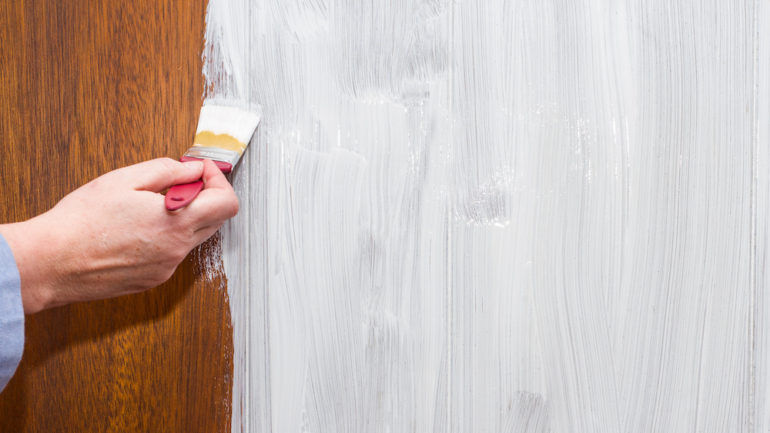
Wood-paneled living areas were popular in the 1960s and 70s. Unfortunately, fifty years later, some of that wall paneling has still not been updated. If you don’t want dated wood paneling in your new home, should you remove and replace it, or can you paint over it?
Removal versus painting
If the paneling is genuine, solid wood, consider keeping it, especially if it dates back much farther than the 1960s. Removing or painting might be a decision you regret later when you have a vintage look. If your solid wood paneling has a dark stain and you want to brighten the room, you could sand and restain it a lighter shade.
Once you’re sure you want to lose the paneled look, you must decide whether to paint over the paneling or remove it altogether. If you choose removal, the amount of work involved will depend on whether the paneling was simply nailed onto the Sheetrock beneath or glued. In the latter case, removing the paneling will damage the Sheetrock, which must be spackled and sanded smooth before proceeding. Where paneling was attached directly to the wall studs, removal will require new Sheetrock, taping and floating before you can paint.
Painting over paneling
The alternative to removal is painting the paneling. Here’s how:
Step one: Assemble your supplies. You need plenty of 150- to 220-grit sandpaper, a hand sander, quality latex paint brushes three or four inches wide, paint rollers and covers with a half-inch nap, drop cloths, masking tape and paper or painter’s tape, all-purpose cleaner, spackle or caulk, paint stir sticks, primer, one or two clean, empty five-gallon pails and, of course, paint.
To determine how much primer and paint to buy, measure the walls’ height and width and calculate the total area to be covered. Next, subtract out for doors and windows. Then, purchase either a stain-blocking oil-based primer or a latex primer, as well as the paint of your choice.
Step two: Lay down your drop cloths. Mask adjacent areas such as ceilings and woodwork with painter’s tape or paper and masking tape. Using water and an all-purpose cleaner, wash down the walls, rinse, and allow the paneling to dry completely. The paint will not adhere properly if there is dirt or dust on the surface.
Step three: Further prep the surface by spackling holes, seams and cracks. Old veneer paneling had grooves running top to bottom, so spackle or caulk these if you want a smooth look. After filling all such spaces, lightly sand the entire surface to bring the filled areas flush with the surface.
Step four: Primer covers the wood grain and helps the paint adhere to the wall, so paint the surface with primer according to the directions on the can and let it dry completely.
Step five: Since there may be slight color variations between paint containers, pour your cans of finish coat paint into a five-gallon pail and stir well to even out the color. Use rollers to paint the majority of the areas. Use brushes to cut in the edges and corners and smooth out seams and grooves that you caulked and sanded. After the paint has completely dried, add a second coat if needed.
Related – 9 Essential Tools for the DIY Painter


Comentarios